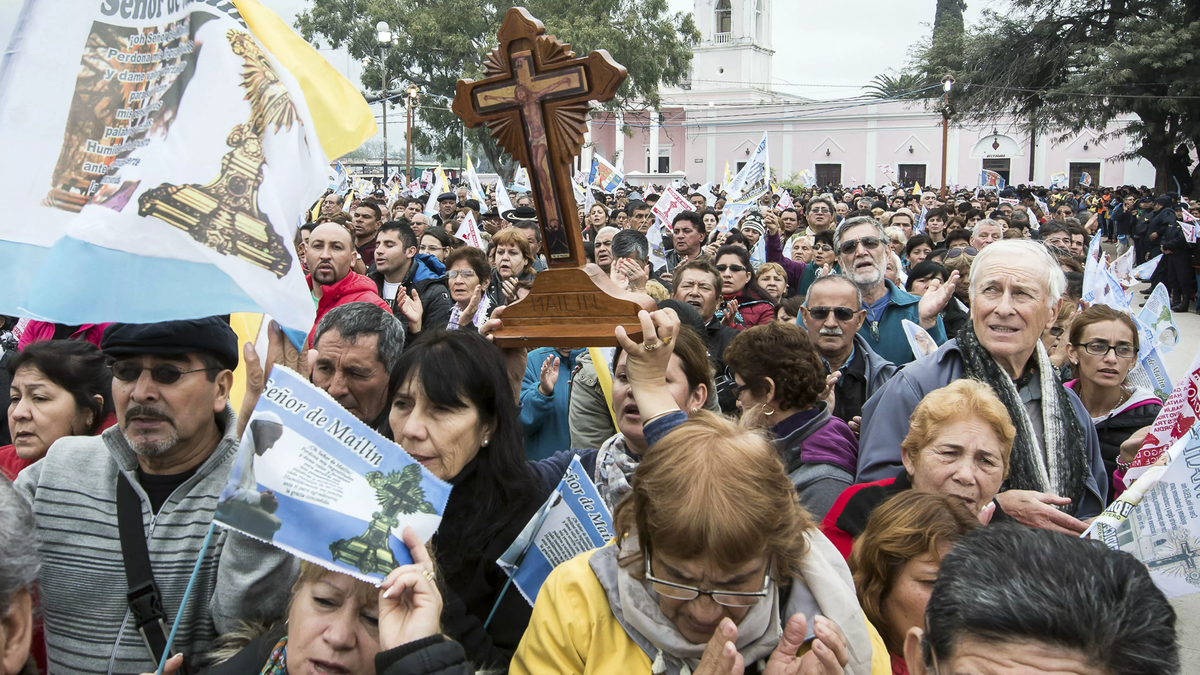A year ago, more precisely the July 9th (a national holiday for Argentines because it commemorates our Independence Day) of 2023, this poor Capuchin friar, raised in the countryside among pigs and cows, who was orphaned at the age of four, with nine siblings and at seven he had to go to work, received the designation of cardinal, because the Holy Father wants to focus on the sacrament of reconciliation with God and revive the Catholic flock of the Buenos aires city (where I have lived for 20 years in the Sanctuary of the Virgin of Pompeii), then the Argentinaalthough it is a universal message.
I don’t preach on the radio, I just reflect. My words are simple, very simple. Sometimes I think of people who are very capable in many subjects and you patiently listen to a poor friar who says something. It is vital to reflect on a subject that is little known and discussed, but very necessary for many brothers. The theme is popular religiosity or popular piety.
How many people believe that they are far from God or that He does not care for them, because they do not know how to pray. However, they are very close to God, more so than those who believe themselves to be very Catholic, very close to Jesus. When the Gospel has been inculturated in a people, a new faith is also transmitted in that culture. Faith is always being renewed. Faith does not drag on. It is a reality in constant development. Popular religiosity is a spirituality, and I repeat, listen carefully, in simple people, not in enough people, it is in the simple, humble, I repeat, in those who believe they do not know how to communicate with God. It is a unique way of living faith.
image.png
The poor prince of the Church in Buenos Aires, Luis Dri, published an article in the Vatican newspaper on popular piety defined by the 97-year-old friar who confesses at the Sanctuary of Pompeii.
To identify the gestures of popular religiosity, see, dear readers of this simple article, who collects holy water, touches the image of the saints, or who walks to the sanctuaries together. You surely have the knowledge
of the great pilgrimages, but to understand this reality, dear brothers, it is necessary to approach popular religiosity with the eyes of Jesus the Good Shepherd, who does not seek to judge the person because he is not praying, because he does not go to church, but rather he is loving. I approach this religiosity not with the intention of condemning, but with the intention of loving.
I am encouraged to write to my 97 yearsand more than 72 years in the Franciscan habit, because I would like us to think together about the firm faith of a mother at the bedside of her sick child, who clings to the Rosary, who perhaps does not know how to say a Hail Mary, but no matter what, she clings to the Rosary and cries out for her child. This is a manifestation of a truly strong life.
Going deeper into the gestures of popular religiosity, I am reminded of a candle lit in a humble home asking Mary for help, or that loving look at Jesus Crucified who did so, so much for us. I don’t know how to pray, but I look. They are manifestations of a life animated by the Holy Spirit. Even if you don’t know anything, it doesn’t matter. Don’t be distressed, don’t be discouraged, don’t think you’re abandoned because the Holy Spirit has been poured into your hearts.
As a grandfather of the church – as the host of the program “pray for me” calls me – I believe that our Argentine and Latin American people have a deep devotion to the Virgin Mary, our mother, like the mass pilgrimages in Luján, Argentina, or in Guadalupe, Mexico, with millions of people. In what small town in America is there not an image of Mary? The images are on buses, in train stations, subway stations, everywhere. She is a model for everyone, a faithful wife, a merciful mother, an admirable educator. Mary is attentive to the cry of many other mothers who, like her, fled. In her case, to Egypt to free her son from Herod’s death threats.
Embed – Cardinal Dri: “Popular religiosity is a spirituality embodied in the simple”
Today, how many mothers are also fleeing with their children, because of the threat of death in war, whether in Ukraine, Gaza or Russia. How many mothers are currently going through the same pain, accompanying their children in their own pain. They are sick from consumption, alcohol problems, depression, among many other evils.
But in all of them, Mary, mother of Jesus and ours, remains at the foot of the Cross. What is she doing there at the foot of the Cross when Jesus was crucified? She is waiting for his last message: ‘There you have your son’ and referring to John he says: ‘Here is your mother’. Mary is always present.
I would like this article, so simple, so easy, to reach the most broken hearts, the simple people of the neighborhoods. I repeat, this devotion or religiosity is not for the self-satisfied, for those who are self-sufficient, for those who do, for those who pray, it is for the simple, there is the mother waiting for them.
Cardinal and Capuchin friar.
Text originally published in Weekly Edition Number 30 (2,878) of Year LXI, of the Roman Observatory in Spanish, Vatican City, on July 26, 2024.
Source: Ambito
David William is a talented author who has made a name for himself in the world of writing. He is a professional author who writes on a wide range of topics, from general interest to opinion news. David is currently working as a writer at 24 hours worlds where he brings his unique perspective and in-depth research to his articles, making them both informative and engaging.




